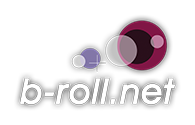Ben Longden
PRO user
I got to borrow the new Bebob LuxLed4 the other day.
Uses 4 watts. has 48 LEDs in a spiral.
I compared it to my AB Ultralight, and at 2m the light output was a half stop down on the AB.
My only problem was the colour balance..
Ben
Uses 4 watts. has 48 LEDs in a spiral.
I compared it to my AB Ultralight, and at 2m the light output was a half stop down on the AB.
My only problem was the colour balance..
Ben
